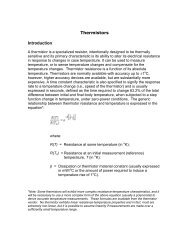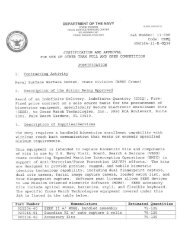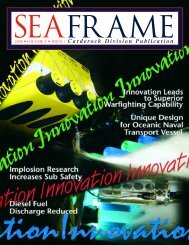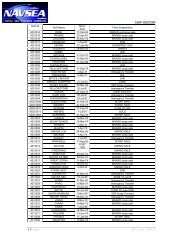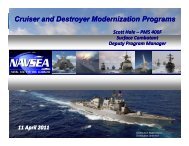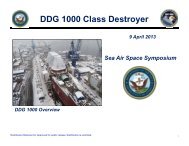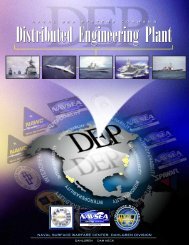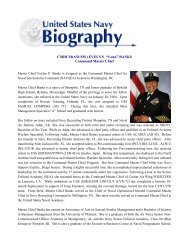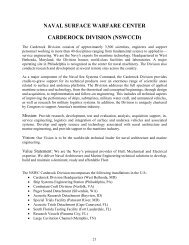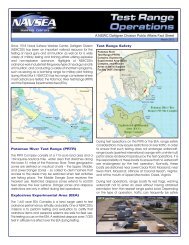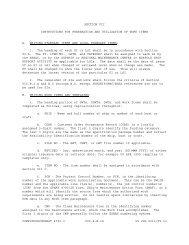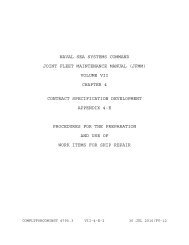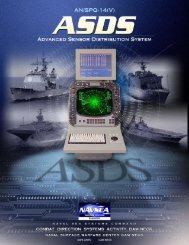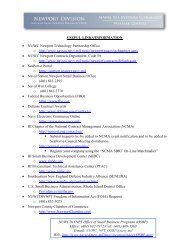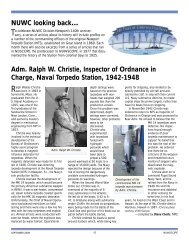Volume 6, Issue 1 - Naval Sea Systems Command - The US Navy
Volume 6, Issue 1 - Naval Sea Systems Command - The US Navy
Volume 6, Issue 1 - Naval Sea Systems Command - The US Navy
You also want an ePaper? Increase the reach of your titles
YUMPU automatically turns print PDFs into web optimized ePapers that Google loves.
SEAFRAME<br />
12<br />
Core equities<br />
“It’s a mess out there . . . Thousands of items to keep track of in a<br />
wide variety of sizes, shapes, and weights.” Photo provided by Jeff Benson, NSWC Carderock Division.<br />
RESPONDING TO THE CHALLENGES OF RE-SUPPLy AT SEA (Continued from page 11)<br />
opened even when stacked. JMICs are top-liftable and have<br />
four-way fork pocket entry to facilitate movement through<br />
the supply chain. Standardized dimensions also facilitate<br />
materiel-handling automation such as the ASRS to reduce<br />
required manning. JMICs are collapsible for retrograde,<br />
so three collapsed JMICs travel in less volume than one<br />
assembled JMIC.<br />
If approved and accepted, JMIC’s transition will<br />
follow an incremental development process supporting<br />
an evolutionary acquisition approach. This will provide<br />
for the time-phased introduction of JMICs in a manner<br />
that concurrently evaluates and mitigates significant risk,<br />
affordability, and military-utility issues.<br />
Energy Conservation development efforts were<br />
recently kicked-off to pursue innovative applications for<br />
<strong>Navy</strong> shipboard energy conservation and carbon footprint<br />
reduction with the potential for rapid transition to fleet<br />
operation. <strong>The</strong> target segment of the fleet is the ships<br />
operated by Military <strong>Sea</strong>lift <strong>Command</strong>: Combat Logistics<br />
Force, Auxiliaries and <strong>Sea</strong>lift.<br />
A number of significant energy saving initiatives<br />
are already underway, including conduct of energy audits<br />
to provide an accurate picture of the total energy used by<br />
various systems in various operating conditions; installation<br />
of accurate fuel meters; application of specialized hull<br />
coatings; and evaluation of a performance based navigation<br />
system to enable more efficient ship routing.<br />
<strong>The</strong> OPLOG “themes,” while specific in focus,<br />
are part of a larger, integrated approach to improving afloat<br />
operational logistics and influencing seabasing.<br />
Working within a collaborative <strong>Naval</strong>, DOD, and<br />
commercial development environment, OPLOG seeks to<br />
mature, integrate, and transition appropriate operational<br />
logistics technologies. ONR, <strong>Systems</strong> <strong>Command</strong>s, and<br />
PEOs comprise the <strong>Navy</strong>’s science and technology<br />
expertise, and acquisition and fielding arms. Additionally,<br />
in the post-S&T, pre-acquisition arena, OPLOG is working<br />
together with these communities as well as OPNAV, the<br />
fleet, Academia and Industry to support and transition an<br />
integrated suite of logistics technologies.



